Art reviews: Angelica Mesiti | Moyna Flannigan
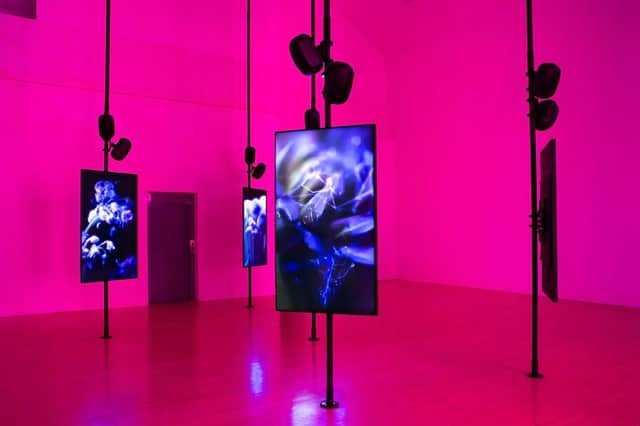

Angelica Mesiti: In the Round, Talbot Rice Gallery ****
Moyna Flannigan: Matter, Ingleby Gallery ****
In 2017, a book by a German forester became an unexpected bestseller. Peter Wohlleben’s The Hidden Life of Trees was one of the first popular science books to explain what scientists around the world were starting to realise: that trees communicate through underground fungal networks and electrical pulses; that a forest is a community, a “wood wide web”.
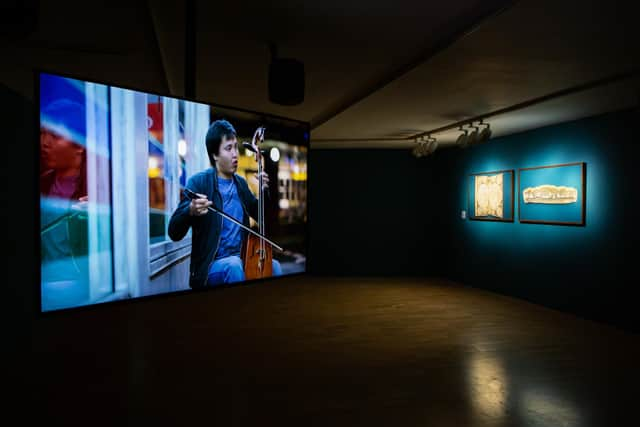

Australian artist Angelica Mesiti’s installation Over the Air and Underground, the first work in her Talbot Rice exhibition, aims to make this network visible and audible. Plants filmed in close-up under ultravoilet light show shimmering webs of mycelium and pollen glowing in fluorescent colours (it is believed this is how bees see it). Accompanying the film is a hypnotic hum, ten unaccompanied voices humming at 220 hertz, believed to the frequency at which trees communicate. After a while, you start to feel it is all around you, coming from the floor, the walls, the air, which, I suppose, it is.
Advertisement
Hide AdMesiti is one of Australia’s leading contemporary artists, and this show, curated by Talbot Rice’s artistic director Tessa Giblin, is her first major solo show in the UK. Alongside new and existing works, she has selected more than 50 objects from various parts of Edinburgh University’s collections (artistic, scientific, musical) turning the gallery into a sprawling idiosyncratic museum as well as a contemporary art space.
Hum (black galaxy), a series of interlocking circles etched on a piece of polished granite, sets a visual theme for the show. Many of the objects selected from the collections, from fossilised raindrops to a piece of 4.5 billion-year-old meteorite, to a series of rare musical instruments, have circular elements. All four installations are experienced in the round.
The gallery’s Round Room is the ideal place for The Swarming Song, a new commission and Mesiti’s interpretation of a 17th century score by music theorist and bee-keeper Charles Butler (from the University collection), in which four female voices pipe the notes believed to mimic sounds made by queen bees.
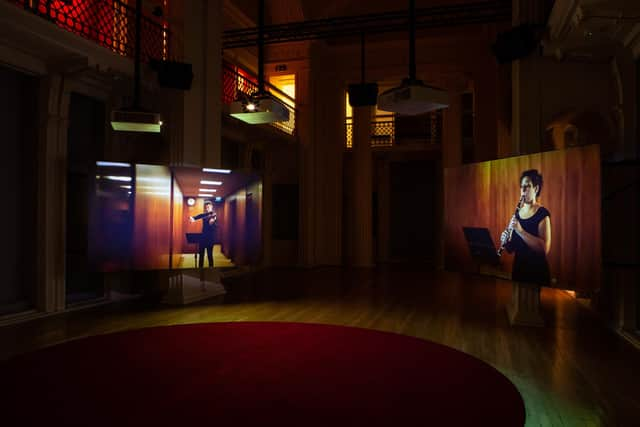

A 2012 work, Citizens Band, brings together four immigrant musicians: a water drummer from Cameroon now living in Paris; a busker singing Algerian protest songs on the Paris Metro; a Mongolian throat singer in Sydney and a Sudanese taxi driver in Brisbane who is a prize-winning whistler. Each is carrying and communicating elements of their identity and culture through music.
The show culminates with ASSEMBLY, the film installation Mesiti made for the Australia Pavillion at the 2019 Venice Biennale. Again, the primary driver is music. Mesiti used a Michaela machine (a semi-musical stenographic device used in the Italian senate to transcribe speech phonetically) to translate a poem by Australian writer David Malouf into a musical score. She then filmed a range of musicians playing the piece in senate buildings in Australia and Italy.
It’s about communication and translation, about forms of resistance. In a way, it’s about power; music is often described as “powerful” and here it is used as an intervention in the corridors of political power. Beautifully filmed in a palette of browns and golds, it becomes a space to think about communication, how it used and misused, about who is listened to and who needs to find other ways to be heard.
Advertisement
Hide AdThis is, perhaps, the best way to understand Mesiti’s work. The show is a kind of assembly, a gathering into which we are invited to spend time, think and consider. She does not transform her material so much as present it, elegantly and thoughtfully, creating unhurried spaces in which to consider ideas. If the viewer has the time and goodwill, there is much here which is worthy of consideration.
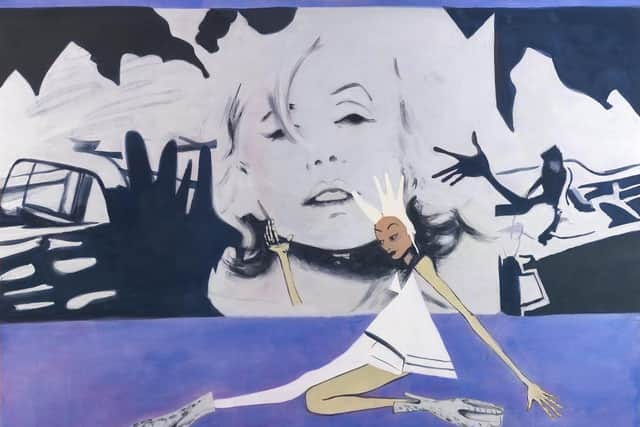

If Mesiti’s work directs our consideration outwards, to the natural world, communities and the machinations of power, Moyna Flannigan’s focus is in the other direction, on the inner aspects of experience. Flannigan’s work has been through an interesting evolution in recent years: in 2016 she moved from figurative painting to collage, cutting up old drawings and using the mixture of scales to create new figures. This work was shown for the first time in the National Galleries of Scotland’s fourth NOW show in 2018.
Advertisement
Hide AdIn this exhibiton, her first with Ingleby, things have moved on again. These works are, largely, a return to painting but with a collage sensibility, both visually and in terms of ideas. She draws on film, literature, historical events, memory and imagination. In particular, in this show, she reflects on 1963, the year she was born, the year of JFK’s assassination, Fellini’s 8 1/2 and Betty Friedan’s The Feminine Mystique, and the year after the death of Marilyn Monroe.
These events inform the “showreels” in the background to many of the paintings. In front of them, her female figures are often performing, posturing, dancing in precariously high platform shoes. Sometimes, they look empowered, more often vulnerable or collapsed mid-dance. One appears to be in a spotlight, hiding behind a curtain of long hair while reaching hands around her applaud or attempt to grab. One thinks of women made famous and then undone by exposure, from Marilyn to Britney Spears. Instinctively, one fears for her.
In these works, Flannigan has found a way to evoke a character and mood through fragments. They are complex, perceptive studies of female experience, always ambiguous. These women court attention, or are pushed into it; they are ambivalent, at best, about the eyes on them, forced have their moments of introspection in the public eye.
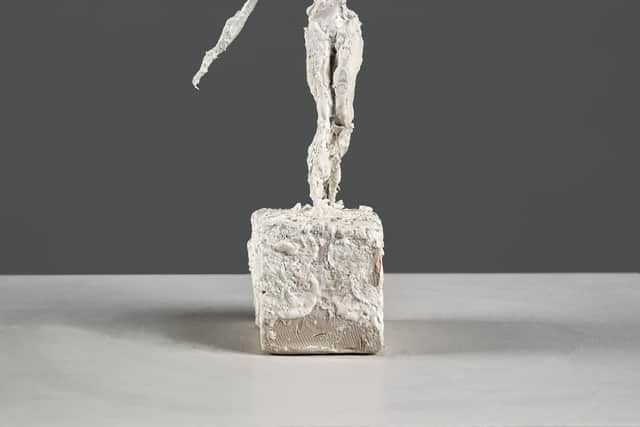

Here, also for the first time, Flannigan shows a number of sculptures, delicate maquettes of female figures. Like the women in the paintings, they are the objects of attention, but seem even more vulnerable and fragile, small figures on big stages, their ambiguous moods captured in tiny details of posture and physique. Although here they are an adjunct to the paintings, it’s a remarkable evolution of practice for a mid-career artist, and we must wait with interest to see where it takes her.
Angelica Mesiti until 19 February 2022; Moyna Flannigan until 18 December
A message from the Editor
Thank you for reading this article. We're more reliant on your support than ever as the shift in consumer habits brought about by coronavirus impacts our advertisers.
If you haven't already, please consider supporting our trusted, fact-checked journalism by taking out a digital subscription at https://www.scotsman.com/subscriptions